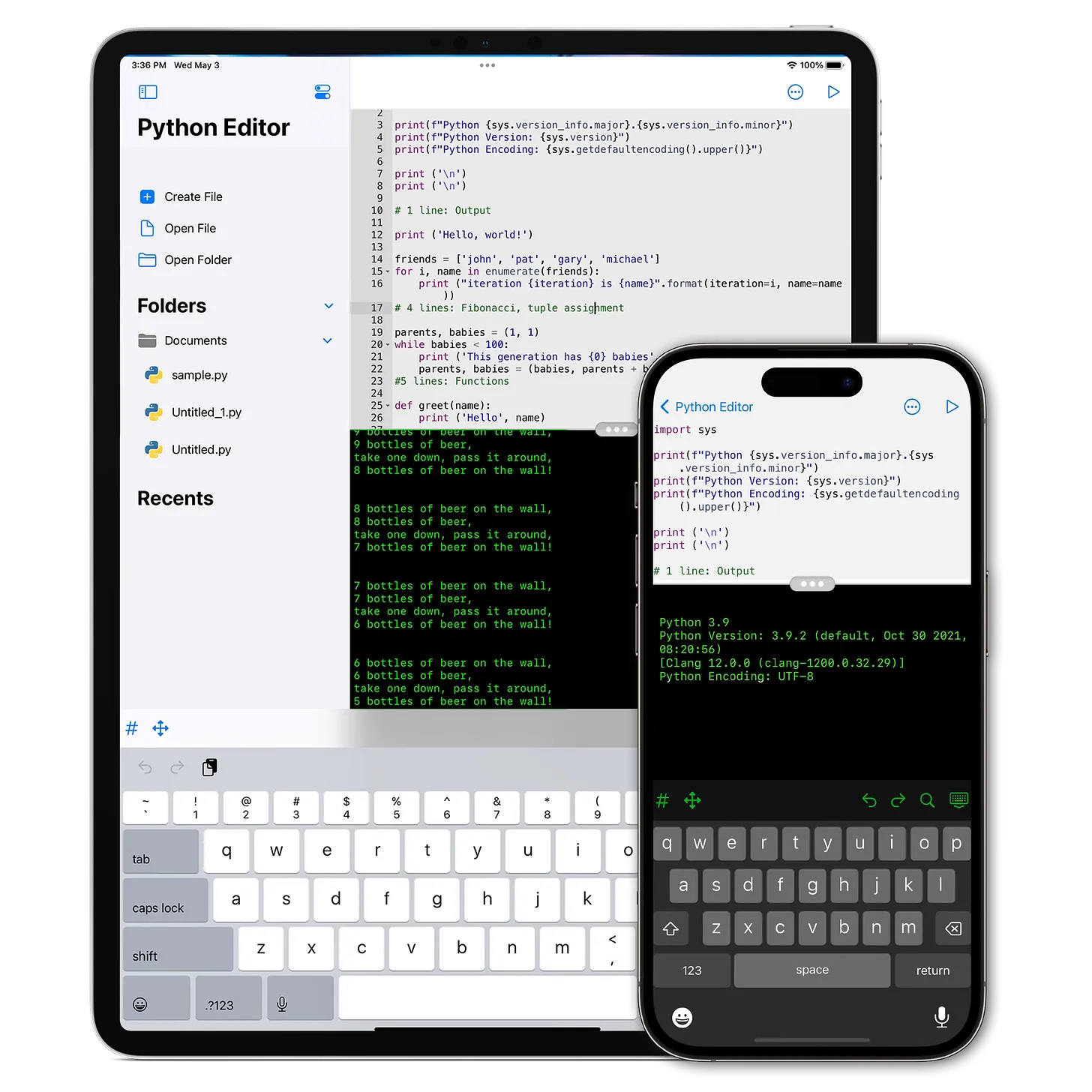Mastering Python Editor App for iOS
A Step-by-Step Guide to Enhancing Your Coding Experience
Welcome to the exciting world of Python coding! Whether you're a seasoned coder or a beginner just dipping your toes into programming, the Python Editor App can significantly enhance your coding journey. This blog post will guide you through the features of the Python Editor App, offering tips to make the most of its capabilities, and sprinkle some fun along the way to keep your learning journey enjoyable.
What is the Python Editor App?
The Python Editor App is a versatile tool designed to make coding in Python more accessible and efficient. Available on various platforms, including web-based interfaces and mobile apps, it provides a user-friendly environment where you can write, debug, and execute Python code. Ideal for quick tests, learning, and small projects, this app is your pocket-sized workstation!
Setting Up Your Environment
First things first, let’s set up your Python Editor App:
1. Download and Install:
- Search the App Store on iOS for ‘Python Editor App’ or follow this link: Download App! We also have a Mac version if you are interested.
- Follow the installation prompts to get the app running on your device.
2. Familiarize Yourself with the Interface:
- Upon launching the app, you’ll typically see a straightforward interface with a code editor, output console, and toolbar for various commands.
- Take a moment to locate the file menu, settings, and execution buttons.
Join our Discord! Invite Link
Writing Your First Python Script
Now that you're set up, let’s dive into writing your first Python script:
# This is a simple Python script
print("Hello, Python Editor App!")- Type the Code: Use the editor to type or paste your Python code.
- Run the Code: Look for a 'Run' button or similar command in the toolbar and click it to execute your script.
- View the Output: Check the output console to see your script's results.
Exploring Advanced Features
To truly make the most out of the Python Editor App, explore its advanced features:
1. Syntax Highlighting and Auto-completion: These features help you write code more quickly and reduce errors by highlighting syntax errors and suggesting code completions.
2. Debugging Tools: Most Python Editor Apps come with integrated debugging tools. Learn how to set breakpoints and step through your code to understand how it executes and to troubleshoot issues.
Tips for Effective Coding
Here are some tips to keep your coding efficient and fun:
- Use Shortcuts: Learn keyboard shortcuts for common actions in the app to speed up your coding.
- Customize Your Workspace: Adjust the app's settings to your liking—change the theme, font size, and editor layout to make your coding environment comfortable.
- Experiment and Learn: Don’t be afraid to try out new libraries and snippets. The app is a great sandbox for experimentation.
Joining the Community
Engage with other users:
- Forums and Online Communities: Join forums or follow blogs that focus on Python programming. Many users share their experiences and tips which can be incredibly helpful.
- Feedback and Suggestions: Don’t hesitate to provide feedback to the developers of the Python Editor App. User suggestions often guide future updates and improvements.
Wrapping Up
The Python Editor App is more than just a tool—it's your gateway to mastering Python programming. By exploring its features, practicing regularly, and engaging with the community, you'll enhance your skills and enjoy the process. Remember, every expert was once a beginner, and every line of code you write builds your expertise. Happy coding!



Please help me ,
Traceback (most recent call last):
File "/private/var/mobile/Containers/Shared/AppGroup/048F588B-98BA-4854-8F92-D61CD79951A4/File Provider Storage/Dev/sourcetoolv3.py", line 4, in <module>
from pystyle import Colors, Colorate
ModuleNotFoundError: No module named 'pystyle'
https://substack.com/profile/253506453-bui-duc-tai/note/c-62335353?r=46xitx&utm_medium=ios&utm_source=notes-share-action